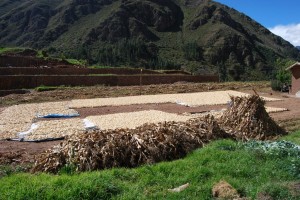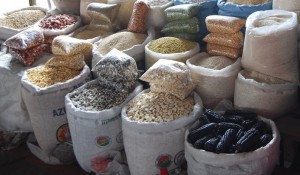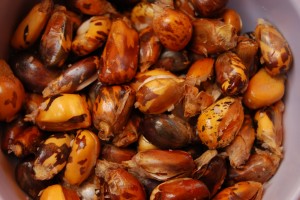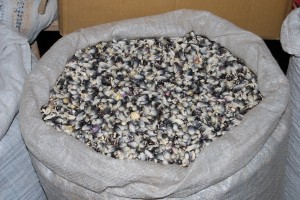Origins, Mystery, and Corn

Soon corn will begin to sprout in Cuzco’s sacred Valley. Its dual tendrils will push from the rich earth and grow skyward as row after row turns green. In this annual emergence is magic and mystery. And, not surprisingly corn is perhaps the most symbolically rich crop of Cuzco’s valleys. Long before industrialized corn, this local corn made its way into most facets of life in Peru. But, one of its greatest mysteries is how it came to be?
As corn grows, especially South American varieties of corn, it towers like a tree and carries its wealth close to its sides, like bundles of heads or gifts. Dependent on man for its cultivation, since domesticated corn does not survive in the wild, this crop fills Peru’s world of story and dance with its majesty and mystery just as it is found in many meals as well as on the streets.
Peruvian Italian Archeologist Duccio Bonavia published a book on corn, (El maíz: su origen, su domesticación y el rol que ha cumplido en el desarrollo de la cultura [San Martin de Porres Fondo Editorial, Lima: 2008]) based on his years of research. Unlike nationalists who would like to see corn as originating in Peru’s soils or from when the fox dropped from heaven and its stomach burst giving people domesticated crops, Bonavia accepts that corn was likely domesticated in Mesoamerica. At least that is where the dominant evidence points. And, from there somehow made its way south to Peru.

But, he observes that the study of the domestication of corn tends to be done from within the walls of established reason and the narrow fields of specialization. To break the stranglehold of an establishment, Bonavia reminds us that the controversy that has shaken the discussion on corn is whether there was one or more than one points of domestication.
The standard and uncontroversial idea, given current evidence, is that corn was domesticated in Mesoamerica. But did it spread from there southward to become a basis of civilization in the Andes, or were there multiple places where corn was domesticated, on where everyone thinks, and another in South America.

Bonavia cites a range of authors in support of the idea that Peru had its own independent history of domesticating corn. Among other things, he notes that in Peru and neighboring areas the variation in the corn grown is so great that it makes Peru one of the primary areas for corn variety. He argues that this diversity is insufficiently studied, especially in its relationship with Mexican corn.

Corn seems to have developed in the Andes, Bonavia holds, in the central Andean region at mid altitudes and then spread from there, adapting to different micro climates as it dropped down to the Peruvian coast and spread to high altitude.
Although Bonavia doesn’t mention it, corn was even raised on the Copacabana Peninsula and the Island of the Sun at an altitude of 3800 meters above sea level. Chriniclers write that corn from this special place, where one major story locates the origin of human beings and, especially, the first Incas, was placed in graineries throughout the Inca Empire as a means of connecting all of them to this important founding place.
Bonavia further lays out evidence that some races of Peruvian corn have very deep roots, dating to times that may have been too early to be explained by the spread of corn from Central America or Mexico. These include the purple corn widely used to day in Peru to make chicha morada, the famous soft drink, and the Peruvian desert mazamorra morada, as well as the corn which is used to make parched corn, the cancha, that is found on street corners and restaurants throughout Cuzco.

The chullpi corn with its long, thin kernels seems to have originated in the Apurimac area or near Ayacucho, from which it would have spread upriver towards Cuzco. Nevertheless Bonavia cites others who argue that the origin of this corn is actually in a corn form named after the great northern Peruvian archeological site of Chavin, called confite chavinense.
The purple corn is called Kculli and seems to have originated in Peru’s central highlands. Both of it and the chullpi are finding new lives as exports from Peru.
These are but two old forms of corn that are part of the enormous diversity of maize found in Peru’s valleys and plains. While the mystery of its origin is still under study, and while most scholars insist of a Mesomerican origin for corn, Bonavia’s study is useful.

Filled with technical details on genetics, pollen, and archeology, Bonavia reminds us of the rich diversity of corn found in Peru and its existence in the country for thousands of years. We may not think of it, when a bowl of toasted corn is placed before us on a table in Cuzco, but we are in the face of an amazing, ancient tradition which continues to be important today. As Genetically modified corn takes over more and more of the world’s fields the pockets of diversity and tradition in Peru will become ever more important.




